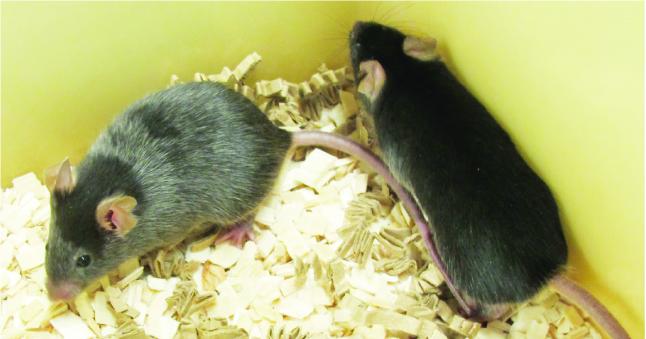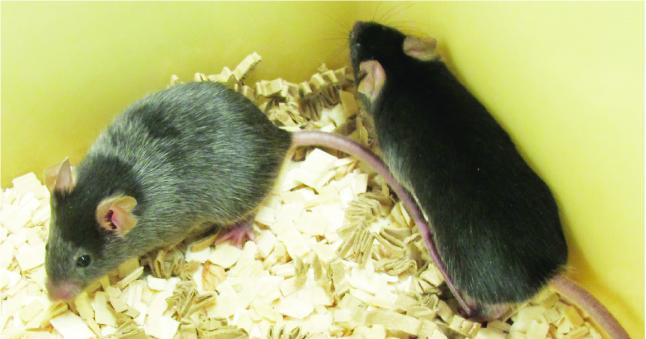
Credit: Maria Grazia Vizioli and Zhixun Dou, Perelman School of Medicine, University of Pennsylvania
PHILADELPHIA — Stress – defined broadly – can have a profoundly deleterious effect on the human body. Even individual cells have their own way of dealing with environmental strains such as ultraviolet radiation from the sun or germs. One response to stress – called senescence – can trigger cells to stop dividing in cases of cancer and aging, found researchers from the Perelman School of Medicine at the University of Pennsylvania. Their study, published this week in Nature, may hold promise for treating inflammation-related disorders.
The relationship connecting senescence, inflammation, cancer, and aging is complex, but first author Zhixun Dou, PhD, a research associate in the department of Cell and Developmental Biology, has been teasing apart these details for most of his career. Dou works in the lab of the study's senior author, Shelley Berger, PhD, the Daniel S. Och University Professor of Cell and Developmental Biology and Professor of Biology and director of the Penn Epigenetics Institute.
Human cells have complicated ways to protect themselves from becoming cancerous. One way is to force "premature aging" via senescence, a process that induces cells to stop growing. Although senescence suppresses cancer, which is the good side of this physiological balance, there is also a dark side. Senescence is associated with normal aging, and senescent cells accumulate in aged tissues. This accumulation impairs healthy tissue by triggering hyper-inflammation. This overdrive eventually contributes to age-related diseases including cancer, heart disease, and neurodegeneration. The overall idea for future therapy is to make a small molecule that could stop the dark side of senescence to treat age-related diseases, especially those related to chronic inflammation.
"Chromatin – structures in the cell nucleus in which genes reside – is traditionally viewed as a cell component that stays put in the nucleus to regulate gene expression," Berger said "We discovered misplaced chromatin fragments outside the nucleus that pinch off from the nuclei of senescent cells."
Berger, Dou, and colleagues found that this wayward chromatin activates a DNA-sensing pathway called cGAS-STING, a mechanism based outside the nucleus best known for restraining microbial infection, such as by bacteria or viruses. In the case of senescence and aging, the body's own chromatin leaking outside of the nucleus is read by cells as a "danger signal" akin to a microbial infection. The misplaced chromatin fragments and the cell's reaction to them eventually lead to inflammation.
"While short-term inflammation can help stop cancer from starting, the problem is that long-term, chronic inflammation can lead to tissue destruction, aging, and even, paradoxically, can help cancer to grow and spread," Dou said.
In the Nature study, the Penn team used stressors such as DNA-damaging agents and activated oncogenes, as well as cells naturally growing old, to set off the alarm. Cells respond in two ways: by shutting down cell replication permanently via senescence and by inducing the alarm system that hails the immune system to mop up the damaged senescent cells. The immune system also has to be in balance: while it is designed to help clean up damaged cells, if uncontrolled, the immune system can do more harm than good.
Mice without an active alarm pathway that have been exposed to a cancer-inducing stress do not call the immune-system for help. This causes problems because damaged cells give rise to tumors in the impaired mice. However, when normal mice are exposed to stressors that induce aging, the build-up of senescent cells stimulates a continual call for immune cells, leading to chronic inflammation, which ultimately causes tissue damage and premature aging. Months after receiving the radiation stress, normal mice with an active alarm system showed massive graying of their fur, a sign of aging in mammals, just like humans show grey hair in old age. By sharp contrast, mice without the alarm system still had their black fur after irradiation. "This is a graphic example of the bright and dark sides of inflammation," Dou said.
The researchers believe that finding molecules to target the always-on inflammatory pathway may hold promise in treating chronic inflammation associated with numerous diseases, especially those of aging, such as arthritis, arteriosclerosis, neurodegeneration, obesity, and possibly even hair graying and loss.
###
The study was funded by the National Institutes of Health (P01AG031862, CA078831, K99AG053406, P01CA196539), the Glenn Foundation, the Ellison Foundation, the Leukemia & Lymphoma Society, and the Penn Skin Biology and Diseases Resource-based Center (P30AR069589).
Penn Medicine is one of the world's leading academic medical centers, dedicated to the related missions of medical education, biomedical research, and excellence in patient care. Penn Medicine consists of the Raymond and Ruth Perelman School of Medicine at the University of Pennsylvania (founded in 1765 as the nation's first medical school) and the University of Pennsylvania Health System, which together form a $6.7 billion enterprise.
The Perelman School of Medicine has been ranked among the top five medical schools in the United States for the past 20 years, according to U.S. News & World Report's survey of research-oriented medical schools. The School is consistently among the nation's top recipients of funding from the National Institutes of Health, with $392 million awarded in the 2016 fiscal year.
The University of Pennsylvania Health System's patient care facilities include: The Hospital of the University of Pennsylvania and Penn Presbyterian Medical Center — which are recognized as one of the nation's top "Honor Roll" hospitals by U.S. News & World Report — Chester County Hospital; Lancaster General Health; Penn Wissahickon Hospice; and Pennsylvania Hospital — the nation's first hospital, founded in 1751. Additional affiliated inpatient care facilities and services throughout the Philadelphia region include Good Shepherd Penn Partners, a partnership between Good Shepherd Rehabilitation Network and Penn Medicine.
Penn Medicine is committed to improving lives and health through a variety of community-based programs and activities. In fiscal year 2016, Penn Medicine provided $393 million to benefit our community.
Media Contact
Karen Kreeger
[email protected]
215-459-0544
@PennMedNews
http://www.uphs.upenn.edu/news/





